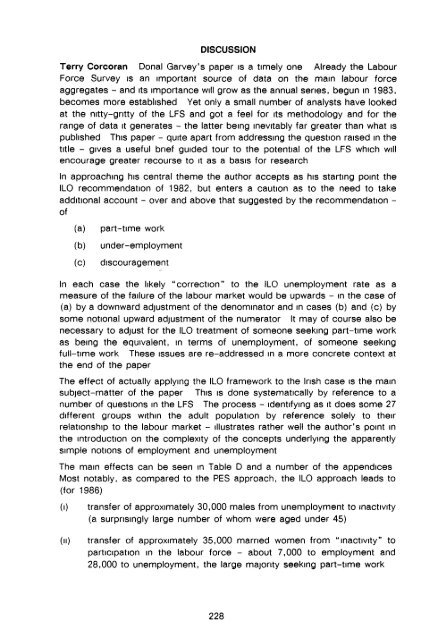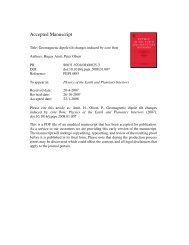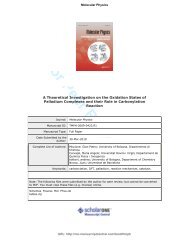WHAT IS THE BEST MEASURE OF EMPLOYMENT AND ... - TARA
WHAT IS THE BEST MEASURE OF EMPLOYMENT AND ... - TARA
WHAT IS THE BEST MEASURE OF EMPLOYMENT AND ... - TARA
You also want an ePaper? Increase the reach of your titles
YUMPU automatically turns print PDFs into web optimized ePapers that Google loves.
D<strong>IS</strong>CUSSION<br />
Terry Corcoran Donal Garvey's paper is a timely one Already the Labour<br />
Force Survey is an important source of data on the main labour force<br />
aggregates - and its importance will grow as the annual series, begun in 1983,<br />
becomes more established Yet only a small number of analysts have looked<br />
at the nitty—gntty of the LFS and got a feel for its methodology and for the<br />
range of data it generates - the latter being inevitably far greater than what is<br />
published This paper - quite apart from addressing the question raised in the<br />
title - gives a useful brief guided tour to the potential of the LFS which will<br />
encourage greater recourse to it as a basis for research<br />
In approaching his central theme the author accepts as his starting point the<br />
ILO recommendation of 1982, but enters a caution as to the need to take<br />
additional account - over and above that suggested by the recommendation -<br />
of<br />
(a)<br />
(b)<br />
(c)<br />
part-time work<br />
under-employment<br />
discouragement<br />
In each case the likely "correction" to the ILO unemployment rate as a<br />
measure of the failure of the labour market would be upwards - in the case of<br />
(a) by a downward adjustment of the denominator and in cases (b) and (c) by<br />
some notional upward adjustment of the numerator It may of course also be<br />
necessary to adjust for the ILO treatment of someone seeking part-time work<br />
as being the equivalent, in terms of unemployment, of someone seeking<br />
full-time work These issues are re-addressed in a more concrete context at<br />
the end of the paper<br />
The effect of actually applying the ILO framework to the Irish case is the main<br />
subject-matter of the paper This is done systematically by reference to a<br />
number of questions in the LFS The process - identifying as it does some 27<br />
different groups within the adult population by reference solely to their<br />
relationship to the labour market - illustrates rather well the author's point in<br />
the introduction on the complexity of the concepts underlying the apparently<br />
simple notions of employment and unemployment<br />
The main effects can be seen in Table D and a number of the appendices<br />
Most notably, as compared to the PES approach, the ILO approach leads to<br />
(for 1986)<br />
(i)<br />
transfer of approximately 30,000 males from unemployment to inactivity<br />
(a surprisingly large number of whom were aged under 45)<br />
(II)<br />
transfer of approximately 35,000 married women from "inactivity" to<br />
participation in the labour force - about 7,000 to employment and<br />
28,000 to unemployment, the large majority seeking part-time work<br />
228
















